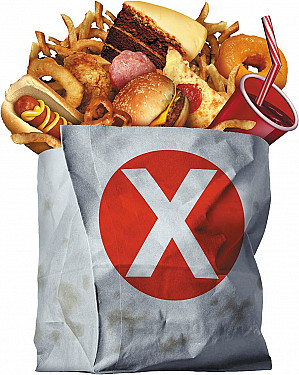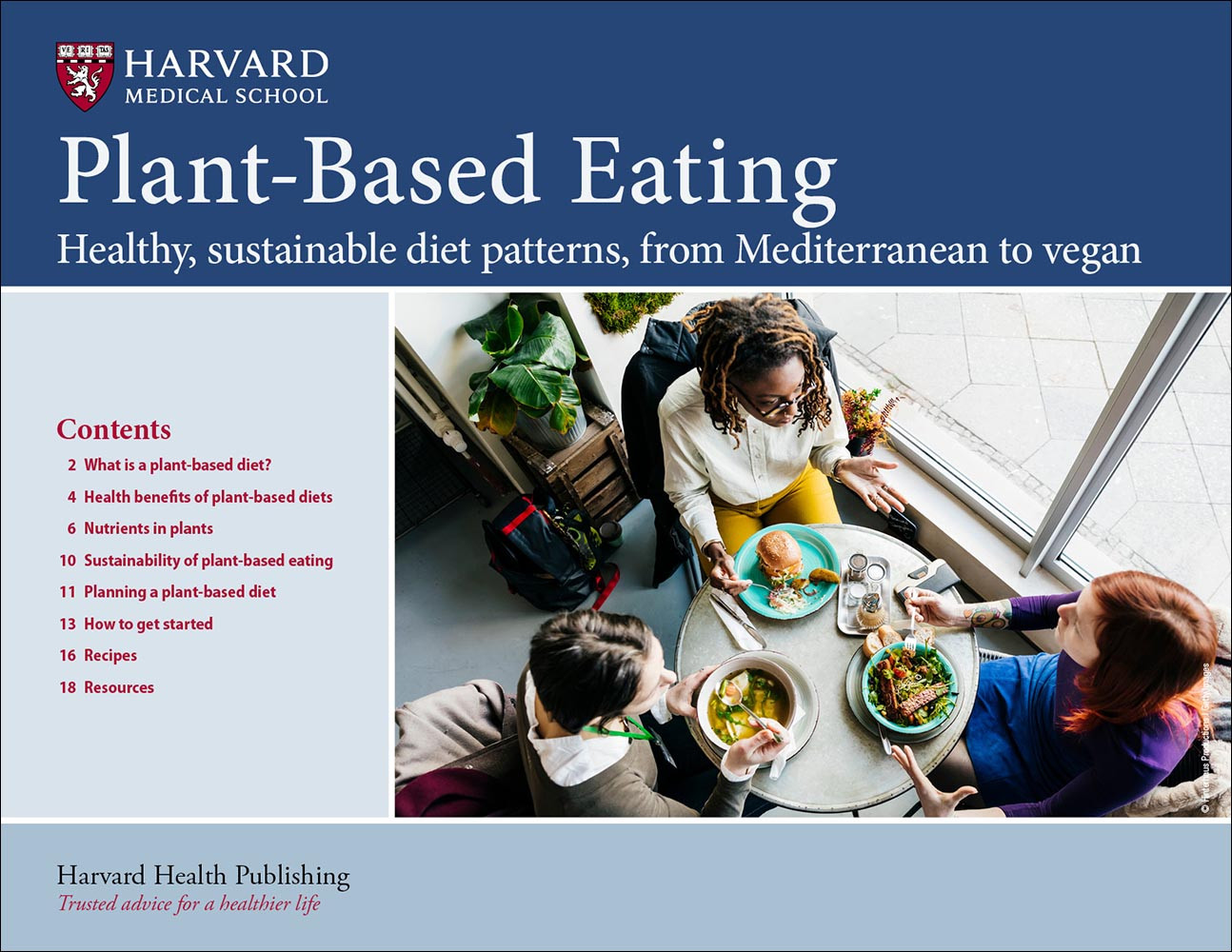Getting fiber while avoiding gluten
Fiber, a nutrient that's plentiful in whole, plant-based foods, is an essential part of a heart-healthy eating pattern.
- Reviewed by Christopher P. Cannon, MD, Editor in Chief, Harvard Heart Letter; Editorial Advisory Board Member, Harvard Health Publishing

Fiber-rich diets are linked to a lower risk of heart attack and stroke. Some of the strongest evidence for fiber's cardiovascular benefits relates to eating whole grains, such as whole wheat and oats. But what if you follow a diet free of gluten, the sticky protein found in wheat, rye, and barley?
This diet is essential for people with celiac disease, a digestive disorder caused by an immune reaction to gluten. But many people who don't have celiac disease also follow a gluten-free diet, often because they experience uncomfortable digestive issues and other symptoms after eating gluten.
"If a gluten-free diet isn't done well, it may be low in fiber, B vitamins, and other nutrients," says registered dietitian Melinda Dennis, nutrition coordinator for the Celiac Center at Harvard-affiliated Beth Israel Deaconess Medical Center. Many gluten-free products such as bread, buns, cereal, cookies, crackers, and pasta are made with highly refined starches like potato starch, tapioca starch, and white rice flour, which don't contain any fiber. And unlike wheat flour, those substitutes are not enriched with B vitamins. Gluten-free products may also contain more fat, salt, and sugar their wheat-based counterparts.
Perhaps not surprisingly, people who go gluten-free often experience both constipation and weight gain. To avoid those problems — and keep your cardiovascular system in good shape — Dennis has three suggestions:
Follow a gluten-free version of the Mediterranean diet. The heart-friendly Mediterranean diet is already mainly gluten-free, so it's easy to adapt, says Dennis. Eat plenty of vegetables, fruits, and legumes (beans and peas), along with moderate amounts of seafood, poultry, and dairy. Choose healthy fats like olive or canola oil. Limit sweets, red meat, and processed meat. Omit gluten-containing grains, which include bulgur, couscous, and farro in addition to wheat, barley, and rye. For suggestions, see the menu at right, which meets the recommended daily fiber intake for people age 50 and older (30 grams for men; 21 grams for women).
Rotate gluten-free whole grains into your menus. People who avoid gluten often rely on corn, rice, or potatoes for a starchy side dish. But six whole grains — amaranth, buckwheat, millet, sorghum, teff, and quinoa — are superior choices, thanks to their high fiber content and array of vitamins and minerals.
Although these grains (some of which are technically seeds) used to be hard to find, they're now widely available in mainstream supermarkets. "If you're not familiar with them, choose one and mix in a small amount when you cook rice," says Dennis.
For breakfast, have a bowl of buckwheat groats or cream of buckwheat topped with fruit, nuts, and maple syrup, Dennis suggests. Like oats (which some people with celiac disease cannot tolerate), buckwheat helps to lower cholesterol. Try adding gluten-free grains to soup or chili, or toast them lightly and sprinkle over a green salad. Find three or four grains that you like and rotate them into your meals on a regular basis. "Each of the super six grains has a smattering of different B vitamins and minerals, which can improve your overall nutritional profile even more than eating wheat," Dennis says.
Fill up on fiber-rich fruits, vegetables, legumes, nuts, and seeds. Most fiber-containing plants feature a mix of both insoluble and soluble fiber. Carrots, celery, kale, and kiwis contain mostly insoluble fiber, which helps you feel full and encourages regular bowel movements. Beans, nuts, seeds, and fruits (such as berries, apples, pears, and citrus fruits) are good sources of soluble fiber, which helps lower cholesterol and blood sugar. Fiber works best when it absorbs water, so be sure to drink plenty of water, says Dennis.
|
A fiber-rich, gluten-free menu |
Fiber (grams) |
|
Breakfast (total fiber: 8 grams) |
|
|
1/2 cup cooked buckwheat groats |
3 |
|
1/2 cup unsweetened almond milk |
0.5 |
|
1/2 cup mixed berries |
3 |
|
1 tablespoon sliced almonds |
1 |
|
1/2 teaspoon ground flaxseed |
0.5 |
|
Morning snack (total fiber: 3 grams) |
|
|
1/2 cup low-fat cottage cheese |
|
|
1/4 cup fresh pineapple chunks |
0.5 |
|
1 tablespoon sliced almonds |
1 |
|
1 tablespoon almond butter |
1.5 |
|
Lunch (total fiber: 8.8 grams) |
|
|
Quinoa, Chickpea and Veggie Salad with Grilled Chicken: |
|
|
1/2 cup canned chickpeas |
5 |
|
1/3 cup cooked quinoa |
1.5 |
|
1/2 cup halved cherry tomatoes |
1 |
|
1/4 cup diced bell pepper |
1 |
|
1/4 cup diced cucumber |
0.3 |
|
2 tablespoons grated Parmesan |
|
|
cheese |
|
|
3 ounces grilled chicken breast |
|
|
Lemon and olive oil dressing |
|
|
Afternoon snack (total fiber: 2 grams) |
|
|
3/4 cup plain low-fat Greek yogurt |
|
|
1 tablespoon chopped walnuts |
1 |
|
1 tablespoon slivered almonds |
1 |
|
Dinner (total fiber: 8.2 grams) |
|
|
Black Bean and Sweet Potato Bowl with Salmon: |
|
|
3 ounces baked salmon |
|
|
1/4 cup cooked black beans |
4.5 |
|
1/2 small roasted sweet potato |
2 |
|
1/4 cup diced bell pepper |
1 |
|
1 tablespoon diced red onion |
0.2 |
|
1 tablespoon salsa |
0.5 |
|
1 tablespoon olive oil |
|
|
Dessert (total fiber: 2 grams) |
|
|
Coconut Vanilla Chia Pudding: |
|
|
1/4 cup low-fat coconut milk |
|
|
1/2 tablespoon shredded coconut |
|
|
1 tablespoon peanut butter |
1 |
|
1/2 teaspoon vanilla extract |
|
|
1/2 teaspoon maple syrup or honey |
|
|
1/2 teaspoon chia seeds |
1 |
|
Total fiber for day: 32 grams |
|
|
Menu courtesy of dietetic intern Nikki Erken and dietitian Melinda Dennis, Beth Israel Deaconess Medical Center. |
|
Image: © cafotodigital/Getty Images
About the Author

Julie Corliss, Executive Editor, Harvard Heart Letter
About the Reviewer

Christopher P. Cannon, MD, Editor in Chief, Harvard Heart Letter; Editorial Advisory Board Member, Harvard Health Publishing
Disclaimer:
As a service to our readers, Harvard Health Publishing provides access to our library of archived content. Please note the date of last review or update on all articles.
No content on this site, regardless of date, should ever be used as a substitute for direct medical advice from your doctor or other qualified clinician.
















